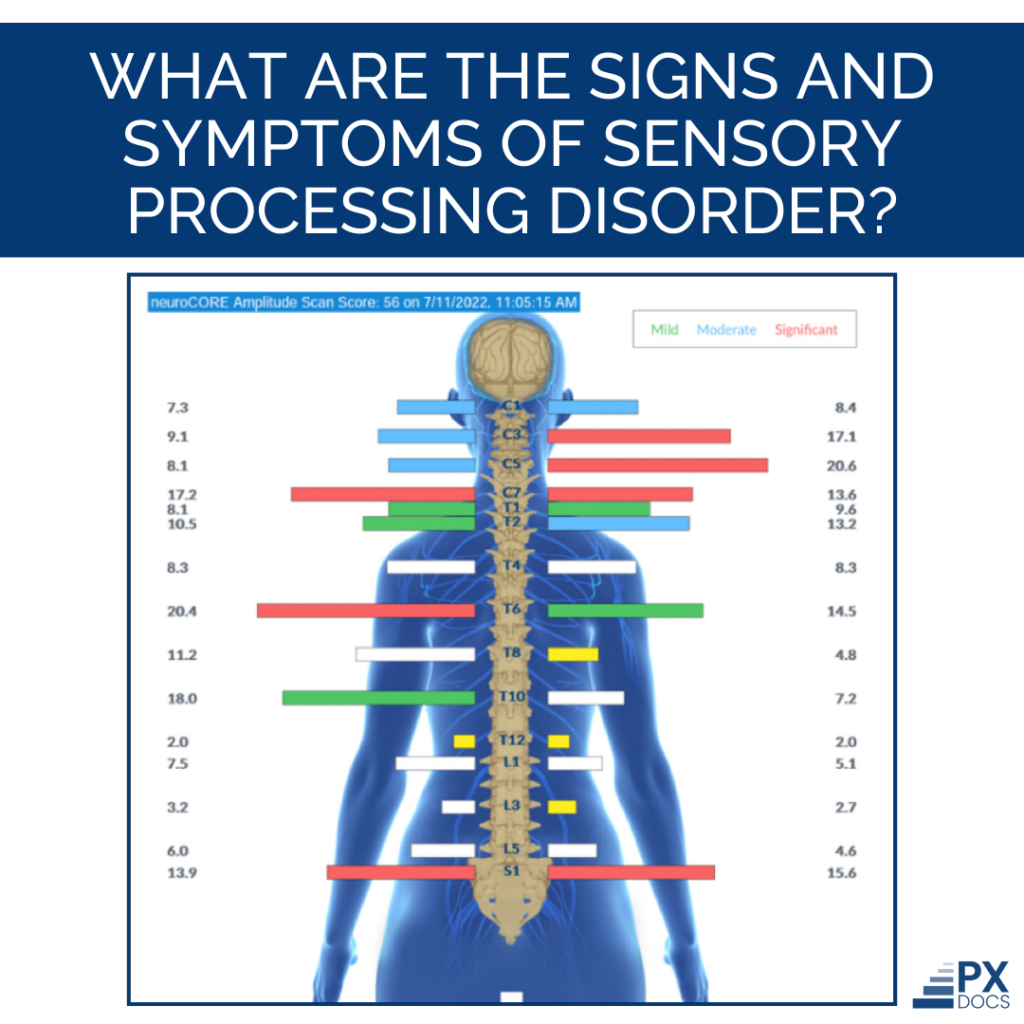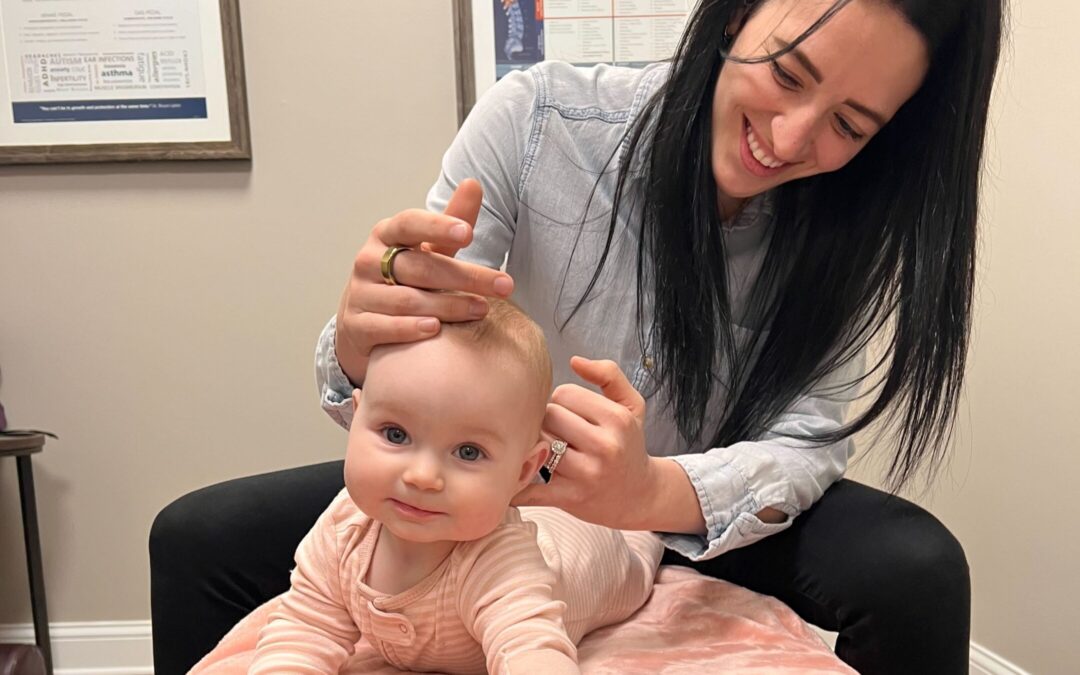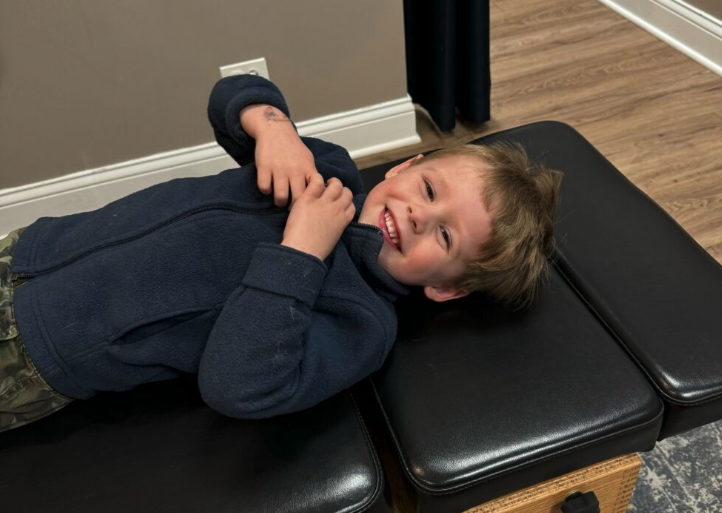Constant meltdowns, big emotions, and difficulty following directions. When these things happen to our kids at home, that’s one thing, but when they happen in public places like the grocery store, restaurants, and at play dates with other families, it becomes beyond stressful and worrisome for parents.
Most pediatricians today dismiss these things in young kids with statements like “don’t worry, they’ll grow out of it” or “he’s just a boy.”
But when we talk to most parents, deep down in their gut, they know something more is going on. These issues can be related to Sensory Processing Disorder.
A Sensory Processing Disorder test can finally get the answers you’ve been looking for as to why constant tantrums, meltdowns, and emotional rollercoasters aren’t slowing down!
If your child is sensitive to touch, won’t wear certain clothes, has a hard time with bright lights or noisy rooms, and frequently responds to everyday things like this with big emotions and behavioral challenges, you may be dealing with symptoms of Sensory Processing Disorder, which can make it hard for children to interact with and thrive in their environment.
However, it’s also hard for parents to recognize the signs of SPD because children don’t always know how to communicate their needs. They don’t understand why they feel the way they do.
The proper Sensory Processing Disorder test will help clear up the troubling questions parents have and also clear a path to happier, healthier children.
What is Sensory Processing Disorder?
Sensory Processing Disorder, or SPD, is a condition that affects how the brain and nervous system process stimuli. It can affect all five regular senses (touch, smell, see, taste, and hearing) or just one of the five. Children with SPD also often struggle with the other two important senses, movement and balance.
Children can either be too sensitive to stimuli they don’t want to be touched or experience an opposite effect where they need more stimulation (sensory seeking). Interactions with either stimulus can be painful and/or overwhelming for people. SPD is often diagnosed in children and adolescents, but adults can also be diagnosed later in life.
How Do You Diagnose SPD?
Not all health practitioners consider SPD its own condition. Many medical professionals see it as a symptom or side effect of another disorder, such as ADHD, autism, or anxiety. Others don’t even consider SPD to be a real concern and will often treat SPD symptoms as typical behavior of children or something kids will grow out of. This is the most frustrating element parents continue to report to us. They don’t know what’s really going on and aren’t sure how to get the best help and care for their child.
But just because your regular pediatrician dismisses your child’s real-life challenges doesn’t mean you’re on your own as you look to help your child. Real experts in SPD and other neurosensory challenges know it works in the other direction, whereby sensory processing challenges can look like ADHD, autism, and anxiety.
Because it can be challenging to diagnose SPD due to how many symptoms there are (and how much they vary), it can be easy to dismiss certain indicators that your child does need help. Our PX Docs are ready to listen to your concerns and guide you through the challenges of SPD, taking your understanding far beyond the basics of the diagnosis.
The Importance of Getting a Sensory Processing Disorder Test
Even a less severe SPD can affect your child’s overall experience and happiness. That’s why our PX Docs focus on not only helping you determine if your child has these sensory processing challenges and what’s causing them.
Children with SPD have a hard time interacting with their environment, which affects their perception, which in turn affects their coordination. SPD can often result in isolation and loneliness for parents and children, especially when you don’t know how to care for and handle the symptoms. A proper test can relieve some of the stress of understanding why these symptoms are there in the first place and then setting up a proper plan of care to help release and relieve the tension built up in your child’s nervous system.
The earlier parents and health professionals can catch it, the easier it is to care for SPD and give kids the tools they need to be relaxed and happy in their everyday life.
What May Be Causing SPD?
While SPD is often dismissed by ordinary doctors as simply bad behavior or caused by genetics, doctors who specialize in SPD know much more about what’s happening.
Our PX Docs often refer to this as “The Perfect Storm,” which is a concept that explains there is never really just one factor involved, but usually a multitude of factors. These “perfect storm” challenges cause the nervous system to get imbalanced and overwhelmed, leading to what is known as dysautonomia. Dysautonomia is a term or condition that most commonly means the autonomic (“automatic”) nervous system struggles to modulate and regulate its internal and external environments properly.
The 3 most common SPD Case History Findings
Clinically, the 3 most common SPD case history findings are those known to disrupt and delay the function and development of the brain and nervous system. These disruptions (known as subluxation) most commonly arise during these crucial periods and life:
1. In-Utero Development (maternal distress, breech, other positioning challenges, etc.)
2. Labor & Delivery interventions such as forceps, vacuum extraction, induction, C-section, etc.)
3. Early Childhood Development (difficulty nursing, colic, reflux, constipation, ear infections, overuse of antibiotics and other medications, motor delays, etc.)
If a developing child faces one or more of those challenges in those crucial periods of brain development, the sensory processing system can be altered and thrown off course. Due to this, it is so important to have a test and exam for the function of the central nervous system as the first and most important element of finding help for your sensory child.
Out of everything studied thus far with SPD and neurodevelopmental issues, birth intervention and trauma continues to be the strongest link that shows up again and again. Be sure you seek a provider who knows how to assess this and put a care program in place to handle it.
What Are the Signs and Symptoms of SPD?
As stated before, one of the most challenging elements of SPD is that children can be prone to hypersensitivity or hyposensitivity. If they’re hypersensitive, they dislike their interactions with their multiple senses. If they’re hyposensitive, they need more stimulation. Some of the most common signs and symptoms fall under both types.
Hypersensitive (or oversensitive) signs look like some of the following scenarios:
- Regular sounds seem too loud
- Rooms and lights feel too bright
- Exhibits poor balance/seem clumsy
- Clothing feels itchy or scratchy
- Light touches feel hard
- Some playground equipment like swings are too much for them
- A lot of foods and textures make them gag
- Sudden movement is overwhelming
- Making regular day-to-day transitions between activities
- Frequent meltdowns inside busy stores or restaurants
Hyposensitive (or undersensitive) signs can look like:
- Needing a lot of attention
- Thrill-seekers
- Struggling to understand and respect personal space
- Chewing on physical things
- Wanting a lot of visual stimulation, like TV or other electronics
- Having a difficult time picking up on social cues
- Needing to touch everything
- Having a hard time sleeping
Other symptoms that may be less obvious to parents can appear in social settings, during motor skill exercises, and in other areas of your child’s life. For example, maybe your child has difficulty using utensils—those motor skills may suffer because of the lack of coordination and a hypersensitivity to touch. Socially, SPD signs might need strict routines to avoid unpredictable sensations or stimuli.

How Do You Test For SPD?
The best way to test for these issues is to take a legitimate and detailed Sensory Processing Disorder test from qualified professionals. If your child displays many of the above symptoms regularly, if these signs interfere with you and your child’s everyday function, or if they have other conditions that affect the brain, a test is most likely the best option.
From there, if you’re like most parents, you already think well beyond just getting a diagnosis or having something to call your child’s everyday challenges. Instead, you want to get to the root cause of your child’s sensory challenges and get a personalized plan of action to help your child have fewer struggles.
Our PX Docs are trained to do exactly that for sensory patients. The INSiGHT Scanning Technology you’ll find inside your local PX office is not found anywhere else in health care. These non-invasive, easy-to-run scans look deep into the function of the central and autonomic nervous system, analyzing and finding any subluxation and dysautonomia that may be connected to your child’s sensory challenges.
The most common INSiGHT Scan finding in children struggling with sensory processing disorder is pictured here below:
That is a NeuroSpinal EMG scan on a child struggling with sensory processing so badly it was leading to daily meltdowns, aggressive behavior, and significant sleep challenges. The green, blue, and red colors in the cervical and mid-thoracic regions can often be linked back to birth trauma, as was the case for this patient.
This NeuroSpinal EMG scan is just one of three (3) computerized tests we run as part of the Sensory Processing Disorder Test and subluxation analysis inside a trained PX Doc’s office, and if you’ve tried every form of diet change, detox, schedule shift, and supplement and still see your child struggle each day… then this test is the one you want to get scheduled right away!
Get your consultation and INSiGHT Scans scheduled today by visiting our PX Docs Directory right away! We can’t wait to hear the stories of smoother transitions and fewer sensory storms for your child!






